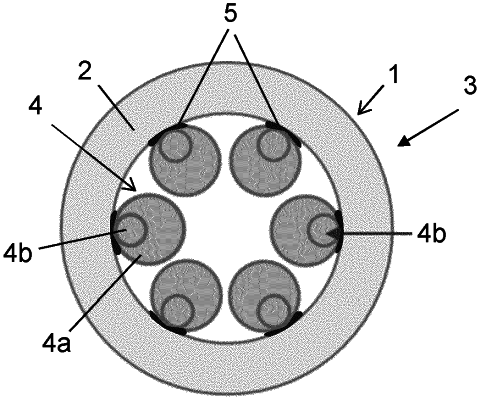| CPC G02B 6/032 (2013.01) [C03B 37/0122 (2013.01); C03B 37/01245 (2013.01); C03B 37/02781 (2013.01); C03B 2203/16 (2013.01); C03B 2203/42 (2013.01)] | 15 Claims |

|
1. Method for producing an anti-resonant hollow-core fiber comprising a hollow core extending along a longitudinal axis of the fiber and an inner sheath region surrounding the hollow core, which sheath region comprises several anti-resonance elements, comprising the method steps of:
(a) providing a cladding tube comprising an inner bore of the cladding tube and a longitudinal axis of the cladding tube, along which a cladding tube wall delimited by an inner side and an outer side extends,
(b) providing a number of tubular anti-resonance element preforms,
(c) arranging the anti-resonance element preforms at desired positions of the inner side of the cladding tube wall to form a primary preform, which comprises a hollow core region and an inner sheath region,
(d) further processing of the primary preform to form a secondary preform from which the hollow-core fiber is drawn, wherein the further processing comprises an elongation and, optionally, a single or repeated performance of one or more of the following hot-forming processes:
(i) collapse,
(ii) collapse and simultaneous elongation,
(iii) collapse of additional sheath material,
(iv) collapse of additional sheath material and subsequent elongation,
(v) collapse of additional sheath material and simultaneous elongation, and
(e) drawing the secondary preform to form the hollow-core fiber,
characterized in that, after elongation in accordance with method step (d), at least a portion of the former tubular anti-resonance element preforms of the primary preform has an oval outer cross-sectional shape, with a longest cross-sectional axis AL and a shortest cross-sectional axis AK, wherein the axis length ratio AL/AK is in the range between 1.01 and 1.27, and wherein the shortest cross-sectional axis AK extends in the radial direction when viewed from the longitudinal axis of the cladding tube.
|